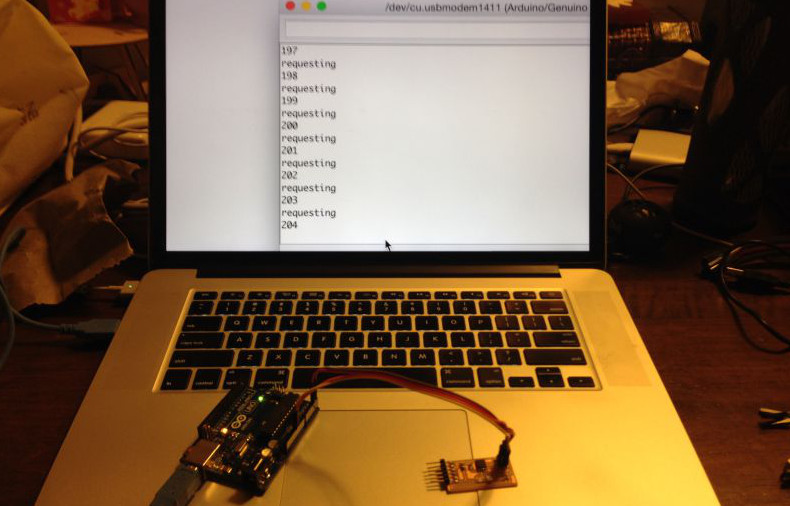Week 16 - Networking
Assignment
design and build a wired &/or wireless network connecting at least two processors
Due to lack of time I have been working on my final project, which will include a I2C network of modules controlled by a master.
I will be updating this page with the networking related sections once I’m able to make progress on the final project.
23rd May
I researched TWI / I2C slave libraries which were implemented in software and did not require the TWI hardware available in some of the higher end AVRs.
I found TinyWire, which is a CPP library that calls into the USI-TWI library written by Donald Blake.
The other option is to tweak Neil’s i2c_master code to work for slaves.
First, I’m going to try TinyWire.
I found some sample code here to test out the I2C interaction. However, when I hooked up the Arduino module and the slave board, the slave MCU got extremely hot and I had to disconnect it.
As a next step I’m trying some simpler code to send data from the master to slave only:
This is the master:
//Code for the Arduino Uno
#include <Wire.h>
void setup()
{
Wire.begin(); // join i2c bus (address optional for master)
}
byte x = 0;
void loop() {
Wire.beginTransmission(0x4);
Wire.write(++x % 2);
Wire.endTransmission();
delay(1000);
}
This is the slave:
#define output(directions, pin) (directions |= (1 << pin)) // set port direction for output
#define input(directions, pin) (directions &= (~(1 << pin))) // set port direction for input
#define set(port, pin) (port |= (1 << pin)) // set port pin
#define clear(port, pin) (port &= (~(1 << pin))) // clear port pin
#define LED_PIN PB3
#define I2C_SLAVE_ADDRESS 0x4 // Address of the slave
#include <TinyWireS.h>
void setup()
{
output(DDRB, LED_PIN);
clear(PORTB, LED_PIN);
TinyWireS.begin(I2C_SLAVE_ADDRESS); // join i2c network
}
void loop()
{
byte recd = 1;
if(TinyWireS.available()) {
recd = TinyWireS.receive();
if(recd == 1) {
clear(PORTB, LED_PIN);
} else {
set(PORTB, LED_PIN);
}
}
}
This worked fine, the slave blinked the LED every 1 sec.
Next step is to get the slave to send back some data to the master.
Here is the master code I tried:
#include <Wire.h>
void setup() {
Wire.begin(); // join i2c bus (address optional for master)
Serial.begin(9600); // start serial for output
}
void loop() {
Serial.println("requesting");
Wire.requestFrom(4, 1); // request 1 byte from slave device address 4
while (Wire.available()) // slave may send less than requested
{
int i = Wire.read(); // receive a byte as character
Serial.println(i); // print the character
}
delay(50);
}
Here is the slave code:
// Code for the ATtiny85
#define I2C_SLAVE_ADDRESS 0x4 // Address of the slave
#include <TinyWireS.h>
int i=0;
void setup()
{
TinyWireS.begin(I2C_SLAVE_ADDRESS); // join i2c network
//TinyWireS.onReceive(receiveEvent); // not using this
TinyWireS.onRequest(requestEvent);
// Turn on LED when program starts
pinMode(1, OUTPUT);
digitalWrite(1, HIGH);
}
void loop()
{
// This needs to be here
TinyWireS_stop_check();
}
// Gets called when the ATtiny receives an i2c request
void requestEvent()
{
TinyWireS.send(i);
i++;
}
I uploaded the slave code with the internal clock set to 8mhz. This worked perfectly well! The master was outputting incrementing numbers from the slave.

I tried reproducing the scenario where the slave board was heating up, but couldn’t - it seemed to work fine with all the changes I tried 1) changing internal clock to 1mhz 2) using VCC & GND from the Arduino
Anyhow its great to have a working I2C slave implementation.